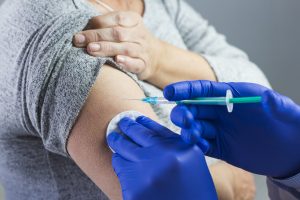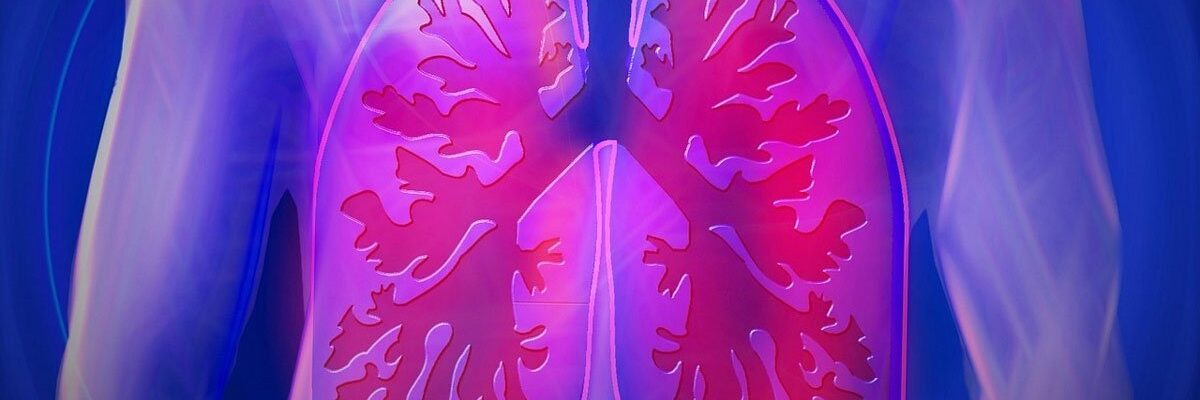Overview
Chronic Obstructive Pulmonary Disease (COPD) is a progressive lung condition that makes breathing increasingly difficult over time. It primarily encompasses two diseases: emphysema, which involves the destruction of air sacs (alveoli) in the lungs, and chronic bronchitis, marked by persistent inflammation and excessive mucus production in the airways. COPD often develops due to long-term exposure to lung irritants such as cigarette smoke, air pollution, or workplace chemicals.
The effects of COPD extend beyond breathing difficulties. Common symptoms include chronic coughing, wheezing, fatigue, frequent respiratory infections, and shortness of breath, especially during physical activity. As the disease progresses, oxygen levels in the blood may decrease, leading to symptoms like cyanosis (bluish skin or lips), weakness, and reduced capacity to perform daily activities. Advanced COPD can cause serious complications, such as heart strain, respiratory failure, and other systemic effects.
Although there is no cure for COPD, effective treatments can manage symptoms and slow disease progression. Medications such as bronchodilators and corticosteroids help reduce airway inflammation and improve airflow, while oxygen therapy may be required for individuals with low blood oxygen levels. Pulmonary rehabilitation programs combine exercise, breathing techniques, and education to improve lung function and enhance quality of life.
Lifestyle changes are essential in managing COPD. Quitting smoking is the most critical step, as smoking is the leading cause of the disease. Avoiding air pollution and respiratory irritants, maintaining a nutritious diet, and receiving vaccinations to prevent infections are also vital. Early diagnosis and a personalized treatment plan can significantly improve outcomes and help individuals live more active and fulfilling lives despite COPD.
Table of Contents
When to See a Doctor
Chronic Obstructive Pulmonary Disease (COPD) is a serious condition that requires medical attention, especially if symptoms worsen or new complications arise. Knowing when to consult a healthcare provider is crucial for managing the disease effectively.
Signs to see a doctor:
- Persistent or worsening symptoms. If you experience ongoing coughing, wheezing, or shortness of breath that interferes with daily activities, it’s important to consult a doctor for evaluation and possible treatment adjustments.
- Increased frequency of respiratory infections. Frequent colds, bronchitis, or other respiratory infections can indicate that COPD is progressing and may require medical intervention.
- Difficulty performing normal activities. If simple tasks such as climbing stairs, walking short distances, or performing household chores become increasingly difficult, it’s time to seek medical guidance.
- Severe breathing difficulties. Episodes of extreme shortness of breath, especially if accompanied by chest pain or bluish lips or fingertips (cyanosis), require immediate medical attention, as they may signal respiratory failure or a severe exacerbation of COPD.
- New or worsening symptoms. Development of new symptoms such as swelling in the legs or feet, persistent fatigue, or unintended weight loss should be reported, as they may indicate complications like heart strain or malnutrition related to COPD.
- Frequent use of rescue inhalers. If you find yourself relying on quick-relief medications more often than prescribed, it may indicate poorly controlled COPD and the need for a reassessment of your treatment plan.
- Uncertainty about the diagnosis or treatment. If you suspect COPD due to risk factors such as smoking or long-term exposure to lung irritants, or if you are unsure about your current treatment regimen, a medical evaluation is essential.
Prompt consultation with a healthcare professional can help address symptoms, prevent complications, and optimize treatment for COPD. In emergencies, such as severe shortness of breath or symptoms of a heart attack, immediate medical attention is critical to ensure safety and well-being.
What Type of Doctor to Seek
If you suspect or have been diagnosed with Chronic Obstructive Pulmonary Disease (COPD), the primary doctor to consult is a pulmonologist, a specialist in lung conditions who can perform advanced tests and tailor treatments. Your care may also involve a primary care physician for initial evaluation and ongoing management, as well as other specialists such as cardiologists for heart-related complications, allergists if triggers like allergies are present, and respiratory therapists for pulmonary rehabilitation. In advanced cases, a nutritionist can address dietary needs, and a palliative care specialist may focus on symptom relief and quality of life improvements. The right specialist depends on your specific symptoms and the stage of your condition.
What to Expect from Your Visit to a Doctor
During a visit, the doctor will review your medical history, including symptoms, smoking habits, and exposure to lung irritants, and perform a physical examination to assess your breathing and lung health. Diagnostic tests such as spirometry, chest X-rays, or blood tests may be conducted to confirm the diagnosis and evaluate the severity of the condition.
Based on the results, the doctor will discuss treatment options, which may include medications, inhalers, or pulmonary rehabilitation, along with lifestyle changes like quitting smoking or avoiding triggers. You’ll also receive advice on managing symptoms and preventing flare-ups, with a follow-up plan to monitor progress and adjust treatments as needed.
Chronic Obstructive Pulmonary Disease (COPD) Treatment Options

Image Source: www.freepik.com
Treating Chronic Obstructive Pulmonary Disease (COPD) focuses on managing symptoms, slowing disease progression, and improving quality of life. The approach varies depending on the severity of the condition, but a combination of lifestyle changes, medications, and medical interventions is typically recommended. Below are the key treatment options for COPD:
- Lifestyle changes. Quitting smoking is the most crucial step in managing COPD, as smoking is the primary cause of the disease. Additionally, maintaining a nutritious diet strengthens the immune system, helping the body fight off lung infections and other complications.
- Oxygen therapy. In cases where COPD leads to low oxygen levels, supplemental oxygen is provided through a mask or nasal cannula. This treatment helps alleviate breathing difficulties and improves oxygen supply to the body.
- Surgery. Surgery is reserved for severe cases or when other treatments have not been effective. Options include:
- Bullectomy. Removal of large, damaged air spaces (bullae) in the lungs to improve breathing efficiency.
- Lung volume reduction surgery. Removal of damaged lung tissue to allow the healthier parts to function more effectively.
- Lung transplantation. A life-saving option for patients with end-stage COPD when other treatments fail.
- Medications. Various medications are used to relieve symptoms and prevent complications:
- Inhaled bronchodilators. These open the airways, improving airflow and relieving shortness of breath. Delivered via inhalers or nebulizers.
- Corticosteroids. Available as inhalers or oral tablets, these reduce airway inflammation and minimize mucus production.
- Phosphodiesterase-4 inhibitors. These reduce inflammation and relax airway muscles, particularly effective for chronic bronchitis patients.
- Theophylline. A tablet that relaxes airway muscles to ease breathing but may have side effects requiring monitoring.
- Antibiotics and antivirals. Prescribed to treat or prevent infections that can worsen COPD symptoms.
- Vaccinations. COPD increases the risk of respiratory infections, so annual flu shots and pneumococcal vaccines are strongly recommended to protect the lungs from severe complications.
COPD management often requires a personalized plan combining these treatments. Early intervention and consistent care can significantly enhance the quality of life for individuals with COPD, reducing the risk of complications and maintaining better lung function.
Chronic Obstructive Pulmonary Disease (COPD) Prognosis
The effectiveness of treatment for Chronic Obstructive Pulmonary Disease (COPD) varies depending on the stage of the disease and the specific interventions used. While COPD is not curable, timely and appropriate treatment can significantly improve symptoms, slow progression, and enhance quality of life. Below is an overview of the prognosis for each treatment option.
- Lifestyle changes. Quitting smoking dramatically improves lung function and slows disease progression, even in advanced stages. A healthy diet and regular exercise can further boost overall health and resilience against infections, enhancing long-term outcomes.
- Oxygen therapy. For patients with severe COPD and low oxygen levels, regular use of supplemental oxygen improves survival rates, reduces strain on the heart, and alleviates symptoms like fatigue and breathlessness.
- Surgery. Surgical options such as bullectomy and lung volume reduction surgery can provide significant relief for carefully selected patients. While these procedures improve lung capacity and breathing, they are typically effective for advanced COPD cases and require ongoing care. Lung transplantation can offer extended life expectancy for eligible patients but involves lifelong monitoring and immunosuppressive medications.
- Medications. Bronchodilators and corticosteroids effectively reduce symptoms and minimize flare-ups, providing better control over daily activities. Phosphodiesterase-4 inhibitors and theophylline can further reduce inflammation and ease breathing in specific cases. However, side effects may limit their use for some patients. Antibiotics and antivirals help manage infections, improving recovery times and reducing complications.
- Vaccinations. Preventive vaccinations significantly lower the risk of respiratory infections, such as pneumonia or influenza, which can exacerbate COPD. This simple yet effective measure improves survival and reduces hospitalizations.
With proper treatment and management, many individuals with COPD can maintain an active and fulfilling life. While the disease cannot be reversed, consistent care and adherence to the treatment plan can help slow its progression and minimize its impact on daily living.


